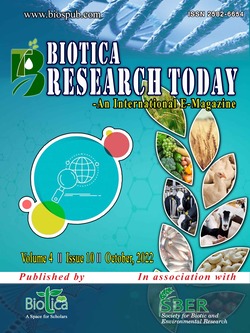
Nanotechnology for Shelf Life Enhancement in Vegetable Crops
Latha G.K.*
Dept. of Vegetable Science, College of Horticulture (Keladi Shivappa Nayaka University of Agricultural and Horticultural Sciences, Shivamogga), Mudigere, Karnataka (577 132), India
Devaraju
Dept. of Vegetable Science, College of Horticulture (Keladi Shivappa Nayaka University of Agricultural and Horticultural Sciences, Shivamogga), Mudigere, Karnataka (577 132), India
DOI: NIL
Keywords: Nanotechnology, Post-harvest loss, Shelf life, Vegetables
Abstract
Vegetables are highly perishable due to physical damage, moisture loss, biochemical changes, and post-harvest microbial activities, which reduce the quality and shelf-life of vegetables. Hence they cannot be stored for a long time without proper management. As per the FAO report, 20 to 44% loss of vegetables occurs in the world every year because of poor post-harvest management practices. Nanotechnology is one of the best solutions for overcoming these losses because it has not yet been linked to any adverse side effects; thus, it can be effectively used to extend the shelf life of fresh vegetables. Nano-materials are natural biodegradable materials of < 100 nm size that can be used for shelf life enhancement of fresh vegetables. These have unique attributes like a barrier against moisture loss, mechanical, anti-bacterial, photo-catalytic and thermal properties, which help to minimize the post-harvest loss in vegetables.
Downloads
not found
Reference
Handford, C.E., Dean, M., Henchion, M., Spence, M., Elliott, C.T., Campbell, K., 2014. Implications of nanotechnology for the agri-food industry: Opportunities, benefits and risks. Trends in Food Science and Technology 40(2), 226-241.
Yadav, N., Barman, K., Kanujiya, A., Dadrwal, B.K., 2020. Nanotechnology in management of post-harvest. Agrospheres 1(4), 15-18.
